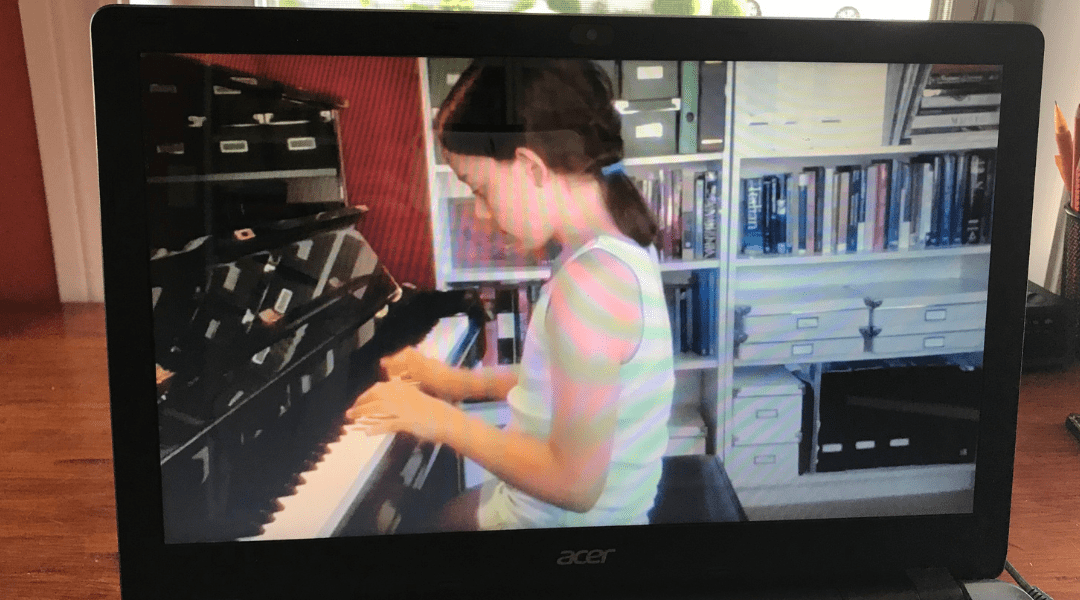
Online education has its own challenges, and as an educator, you’ve probably experienced a few yourself. When discussing online instruction with other teachers working in special music education, student behaviour seems to be the most significant concern.
I’m now several months into my virtual teaching and everything seems to be going smoothly; off-task behaviours are at a minimum, my students are progressing, and most importantly, having fun! Amazing, right?! Let’s just say…I have had to do a lot of rethinking, reflection, and reworking when planning for my online sessions.
Okay, let’s get to the point! What are some behavioural management strategies that work in an online environment?
Communication is Key
Make sure your goals are clear! I like to use vocabulary such as:
“It’s time to____,”
“My turn first, and then your turn,”
“Your job right now is to____.”
When students know what is expected of them, they are less likely to become distracted. Make your teaching explicit by breaking your instruction into smaller parts, give clear expectations, model for students how to start and succeed on each task, and give students opportunities to practice.
Avoid longer directions and take only the time necessary to cue students on essential information. This helps limit off-task behaviour and accommodates students who struggle with attention. Try to instruct in a fast-paced and sequenced manner. Not only will students lose interest if directions are too long, but many students will not understand what is being expected of them. Keep it short and sweet! Concise and sequenced instruction keeps students on track and leaves little time for off-task behaviour.
Reinforcements
Make sure to give praise! Let your students know how well they are doing. Verbal positive reinforcements are so important online, and there are visuals available on most online learning platforms that can be used as positive reinforcement. Why not throw up a clapping hands emoji while giving students verbal praise? If teachers acknowledge good classroom behaviour, students will understand what the expectations are in an online learning setting.
So, when should you give praise? You can give praise when you feel it is appropriate. I give praise if students wait patiently, if students turn on their camera when I ask, or if students complete tasks independently. It can be anything really, and doesn’t need to be big! It really depends on your goals for each student. The important thing is to create a positive learning environment with clear indicators of success for your student.
Engagement
Consider a multi-modal presentation of material and use multiple modes of expression.
Multimodal learning allows for a number of our senses are being engaged during learning. This is so important to ensure that we’re reaching our students in the learning pathway that works best for them, but can be very challenging to achieve in online learning. Try to include active learning opportunities for your students to engage kinaesthetic learning, like having them move to the beat or incorporating a game that requires them to respond through movement (for example, indicating whether you’re playing high or low sounds by reaching up or down). While we all know how challenging duet playing can be in a virtual setting, you can do a call and response game on your instruments, or take turns playing phrases to encourage active listening for auditory learning. For additional visual support, there are many online games or software that you can use through sharing your screen to engage with your students. If we allow our students to present content and express what they know in different ways, students will become more engaged. If student engagement increases, off-task behaviour decreases.
While virtual teaching can require creative thinking and new teaching techniques, it can also be a fantastic tool for accessibility and continued music engagement when in-person learning isn’t possible. It won’t look the same as traditional face-to-face lessons, and that’s OK! Embrace the challenge and be willing to learn along with your students.
Happy teaching!



